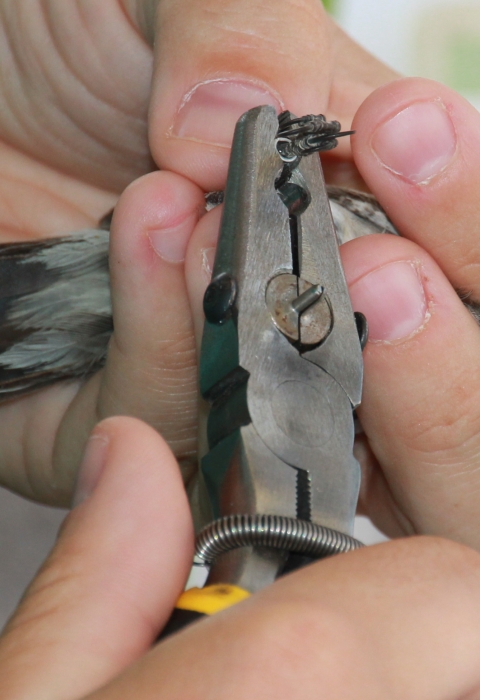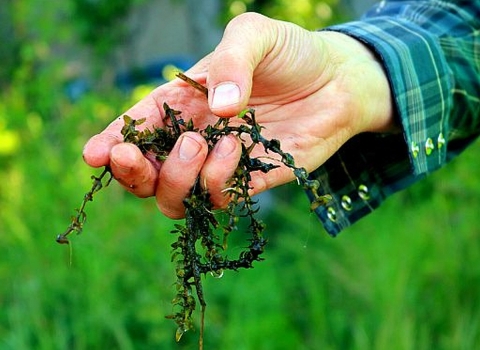U.S. Fish and Wildlife Service personnel recently completed the fifth year of banding migratory birds on the Moapa Valley National Wildlife Refuge as part of a project to assess the overall status of birds that migrate to southern Nevada to breed and their use of habitat on and adjacent to the refuge. The banding effort at the Moapa Valley NWR is part of a long-term, continent-wide banding project called MAPS (Monitoring Avian Productivity and Survivorship), which is managed by the Institute for Bird Populations. This is the only MAPS banding station currently operating in Nevada. Over the five years of banding at the refuge, the Service was assisted by volunteers from groups such as the Red Rock Audubon Society, along with staff from the Nevada Department of Wildlife and Southern Nevada Water Authority.
From 2018 to 2022, the team banded 390 migratory birds representing 47 different species at the banding station on the wildlife refuge. Captured birds are given a lightweight, numbered aluminum leg band and released unharmed. The banding was conducted targeting breeding birds and was typically done from the middle of May until early August. The operators of the banding station collect information on the age, gender, body condition, and reproductive status of the birds. The data collected can be used to estimate key demographic parameters - also known as vital rates - like reproductive rates, survival of individual bird species, and movement patterns.
“The Moapa Valley NWR bands more Abert’s towhees than anywhere else in the country,” said refuge manager Rob Vinson. “We also banded the first cactus wren ever banded in Nevada.”
Banded birds do return to the refuge and are recaptured. For instance, a brown-crested flycatcher that was captured and banded in 2018 was recaptured this year. Other species banded at the station include Lucy’s warbler and phainopepla (silky flycatcher).
All the data collected over the five years is sent to the Institute for Bird Populations in California, which manages the MAPS banding efforts. This data is then accessible for researchers to assess while conducting various research projects on migratory birds. The bands used are supplied by the Bird Banding Laboratory operated by the U.S. Geologic Survey on the Service’s Patuxent Research Refuge in Maryland, and applied by a permitted bird bander.



